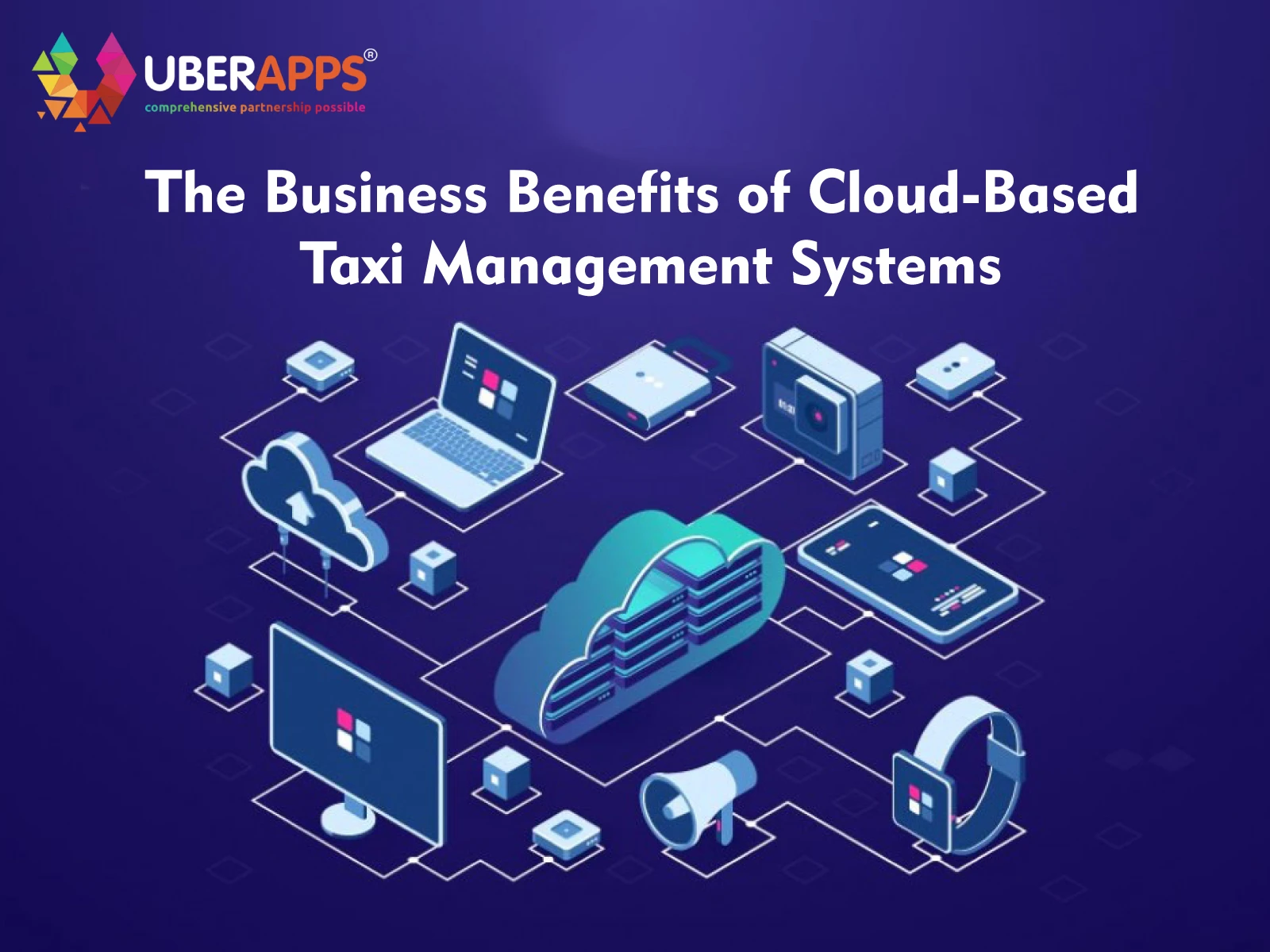
The Business Benefits of Cloud-Based Taxi Management Systems
In today’s competitive mobility landscape, efficiency and scalability define success. For taxi companies and startups, traditional dispatch models no longer cut it. Cloud-based taxi management systems have emerged as the foundation for modern taxi booking apps—enabling real-time coordination, dynamic pricing, and secure in-app payments for taxi apps.
By leveraging cloud infrastructure, businesses gain flexibility, faster innovation cycles, and centralized control across fleets. Whether you’re managing 10 vehicles or 10,000, cloud-based taxi management software offers unmatched automation, analytics, and operational visibility.
In this article, we’ll explore the core business benefits of cloud taxi management platforms, how they empower entrepreneurs, and why adopting cloud technology is key to scaling your Uber clone or ride-hailing app business successfully in 2025 and beyond.
This blog explores how cloud-based taxi management systems revolutionize modern transportation businesses. By shifting from traditional dispatch to cloud-powered platforms, taxi operators gain scalability, cost efficiency, and real-time visibility. The article highlights core benefits including data analytics, seamless integrations, enhanced security, and superior rider-driver experiences. Through practical examples and detailed analysis, it demonstrates how SaaS taxi app models enable rapid deployment, lower infrastructure costs, and sustainable growth. It concludes by emphasizing cloud technology’s role in driving innovation, eco-friendly operations, and long-term profitability for startups and enterprises alike—making it an essential foundation for future-ready taxi booking apps.
Understanding Cloud-Based Taxi Management Systems
What Is a Cloud Taxi Management System?
A cloud-based taxi management system is an all-in-one digital solution that centralizes dispatch, booking, payments, analytics, and fleet tracking on a cloud server. Unlike legacy systems installed on local machines, cloud platforms run entirely online—accessible via web portals or mobile dashboards.
Key takeaway: Cloud technology eliminates hardware costs and brings real-time visibility across your entire taxi operation.
Why Traditional Systems Are Becoming Obsolete
Old on-premise systems suffer from slow updates, high maintenance costs, and limited scalability. With mobility businesses expanding rapidly, cloud-based taxi systems have become the preferred model because they:
- Offer instant scalability for new users or cities
- Provide automatic software updates
- Reduce dependency on physical servers
- Ensure secure data backups and disaster recovery
Key takeaway: Cloud platforms replace rigidity with agility—helping you focus on growth, not IT maintenance.
Core Business Benefits of Cloud-Based Taxi Management Systems
1. Scalability and Flexibility for Growth
As your taxi booking app gains users, the system must adapt instantly. Cloud-based management systems automatically scale to handle increased ride requests, driver sign-ups, and real-time tracking.
Benefits of Scalable Architecture
- Instant expansion: Add cities, fleets, or new features without downtime.
- Automatic load balancing: Manage thousands of concurrent bookings seamlessly.
- Flexible pricing: Pay only for the resources you use.
Key takeaway: Cloud scalability future-proofs your taxi app development investments as your business grows.
2. Lower Operational and Infrastructure Costs
Traditional IT setups demand servers, licenses, and dedicated IT teams. Cloud-based platforms operate on subscription-based or pay-as-you-go models, drastically cutting overhead costs.
Cost Advantages
- No upfront hardware investment
- Reduced maintenance costs
- Automatic updates with zero downtime
- Centralized support from the SaaS provider
Key takeaway: Move from CapEx to OpEx—cloud taxi systems turn heavy infrastructure costs into predictable operational expenses.
3. Real-Time Data and Analytics for Smarter Decisions
Cloud infrastructure enables continuous data synchronization across your taxi ecosystem. Admins can monitor trips, driver activity, and financial performance in real time.
Use Cases of Data-Driven Insights
- Identify high-demand zones for dynamic pricing
- Track driver performance with live dashboards
- Analyze rider behavior and peak hours
- Automate incentive programs and fleet utilization
Key takeaway: Real-time analytics turn daily operations into actionable intelligence for business optimization.
4. Enhanced Security and Data Protection
Data breaches can cripple a taxi business. With cloud-based taxi app development, your data resides in encrypted servers managed by industry leaders like AWS, Google Cloud, or Azure.
Security Benefits
- SSL and HTTPS encryption
- Multi-factor authentication for admin panels
- GDPR-compliant data storage
- Regular security audits and automated backups
Key takeaway: Cloud systems provide enterprise-level security that small taxi startups could never achieve on their own.
5. Seamless Integration with Ride-Hailing App Features
Cloud platforms easily integrate with ride-hailing app featuresfrom driver routing and fare calculation to in-app wallet payments.
Common Integrations
- Payment gateways (Stripe, Paystack, Razorpay)
- GPS and map APIs (Google Maps, Mapbox)
- Push notifications and chat systems
- AI-powered route optimization
Key takeaway: Cloud integration simplifies feature expansion—empowering you to compete with global Uber clone apps.
Operational Advantages of Cloud Taxi Management
Centralized Fleet and Driver Management
Administrators can monitor all vehicles and drivers from a single, cloud-hosted dashboard. This unified control enables quick interventions in case of emergencies, idle drivers, or fraudulent activity.
Cloud Fleet Management Features
- Driver verification and document tracking
- Real-time GPS fleet overview
- Auto assignment of nearest drivers
- Maintenance reminders and alerts
Key takeaway: Cloud-based dispatch creates transparency and accountability across your entire network.
24/7 Availability and Remote Access
Cloud systems are accessible from anywhere—ideal for businesses expanding across time zones or managing multiple branches.
Remote Operations Benefits
- Monitor performance from any device
- Conduct remote troubleshooting and updates
- Enable contactless management for remote teams
Key takeaway: Business continuity and remote scalability are built into the DNA of cloud-based taxi systems.
Faster Feature Deployment and Updates
Traditional software updates can take weeks to implement. Cloud-based taxi systems deploy new versions seamlessly without interrupting service.
Key takeaway: Continuous innovation becomes effortless when updates happen in real-time across the platform.
The Financial Impact of Cloud-Based Systems
Predictable Revenue Models for SaaS Taxi Apps
With SaaS taxi app structures, companies can scale based on subscription tiers—ensuring stable cash flow without unexpected tech costs.
Financial Benefits
- Predictable monthly/annual billing
- Built-in uptime guarantees
- Reduced IT staffing requirements
Key takeaway: Cloud taxi management converts unpredictable maintenance into reliable business forecasting.
Reduced Downtime and Higher Productivity
Downtime equals lost rides and dissatisfied customers. Cloud taxi systems guarantee 99.9% uptime, allowing businesses to serve riders around the clock.
Performance Enhancements
- Real-time backups during server overload
- Distributed architecture prevents bottlenecks
- Auto recovery in case of system failure
Key takeaway: High availability means more completed rides, more earnings, and better user satisfaction.
Enhancing Rider and Driver Experience
Simplified Onboarding and Operations
Drivers can upload documents, track rides, and withdraw earnings—all through the cloud-based app interface. Riders enjoy frictionless booking, live tracking, and instant payment options.
Experience-Driven Advantages
- Faster driver onboarding
- Transparent earnings reports
- Real-time notifications for both parties
- Multi-language and multi-currency support
Key takeaway: A seamless experience for drivers and riders boosts retention and brand reputation.
Advanced Ride-Hailing App Features Powered by Cloud
Cloud infrastructure supports innovative ride-hailing app features, including:
- AI-driven route optimization
- Surge pricing automation
- Driver heat maps
- Loyalty and referral programs
Key takeaway: Cloud systems don’t just run your app—they evolve it.
Sustainability and Eco-Friendly Fleet Management
Cloud Efficiency Meets Green Operations
By reducing paper-based dispatch and manual tracking, cloud taxi systems contribute to sustainability. Combined with electric vehicle integration and smart routing, they lower carbon footprints.
Eco-Friendly Benefits
- Optimized routes reduce fuel consumption
- Support for hybrid and EV fleets
- Paperless billing and reports
Key takeaway: Cloud platforms align profitability with environmental responsibility.
Real-World Case Examples
Urban Fleet in Southeast Asia
A startup in Bangkok implemented a SaaS taxi app model. Within four months:
- Downtime reduced by 85%
- Driver registration grew 40%
- Customer satisfaction rose by 25%
Regional Operator in Latin America
Using a cloud-based taxi dispatch, a local company scaled operations across three cities without buying new servers—saving 50% in infrastructure costs.
Key takeaway: Cloud adoption enables faster growth with lower costs and higher scalability.
The Future of Taxi App Development Is Cloud-Driven
Integration with AI, IoT, and Predictive Systems
Future taxi app development will merge cloud computing with AI, IoT sensors, and predictive analytics—enabling smarter vehicle maintenance, autonomous dispatch, and dynamic pricing.
Key takeaway: The cloud is the foundation for next-generation smart mobility.
Multi-Tenant SaaS Models for Franchise and Regional Operators
Cloud infrastructure allows single admin systems to manage multiple franchises, each with customized branding and localized pricing.
Key takeaway: One platform can serve many brands perfect for expanding across regions.
Conclusion
Cloud-based taxi management systems have become the backbone of modern mobility. They empower entrepreneurs, startups, and established fleets with automation, real-time control, and data-driven intelligence. By combining affordability, scalability, and continuous innovation, SaaS taxi app solutions remove technical barriers and open doors for rapid expansion.
Whether you’re launching a new Uber clone, upgrading legacy dispatch software, or scaling across regions, the cloud offers unmatched agility and resilience. Features like real-time tracking, secure in-app payments, analytics, and multi-platform access redefine how taxi businesses operate.
In a world where speed and data drive success, cloud adoption isn’t optional it’s essential. By choosing a reliable taxi app development partner like UberApps.tech, businesses can build, scale, and sustain high-performance ride-hailing ecosystems that thrive in the digital age.
FAQS
1. What is a cloud-based taxi management system?
A cloud-based taxi management system is a digital platform hosted on the cloud that manages dispatching, bookings, payments, driver and vehicle management, and analytics for taxi businesses, enabling real-time coordination.
2. How does a cloud system benefit taxi booking apps?
Cloud systems improve scalability, reduce maintenance costs, provide real-time visibility into fleet operations, enable automated dispatching, route optimization, and seamless payment processing.
3. Can a small taxi startup afford cloud-based management?
Yes. SaaS taxi apps with subscription-based pricing make advanced, enterprise-level cloud technology accessible and affordable for startups without heavy upfront investment.
4. Are in-app payments secure on cloud taxi platforms?
Absolutely. Cloud taxi platforms use encrypted payment gateways, comply with PCI-DSS, GDPR standards, and ensure secure tokenized transactions to protect user data and prevent fraud.
5. What’s the future of taxi app development with cloud technology?
The future includes AI-powered predictive analytics, multi-tenant scalable architectures, enhanced automation, real-time insights, and smarter fleet management to make taxi businesses more efficient and responsive.
Author's Bio

Vinay Jain is the Founder of UBERApps and brings over 10 years of entrepreneurial experience. His focus revolves around software & business development and customer satisfaction.

